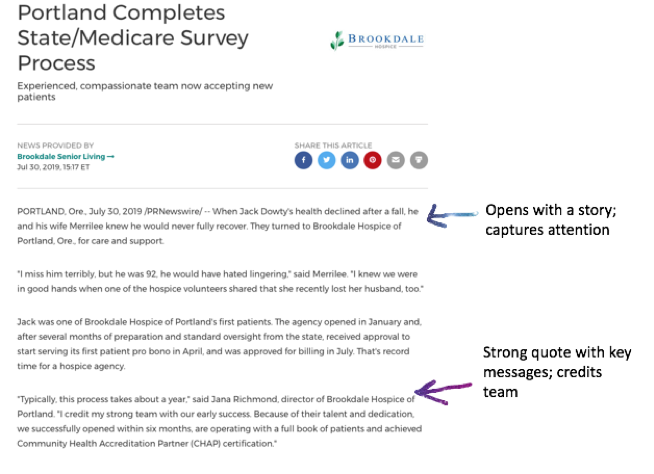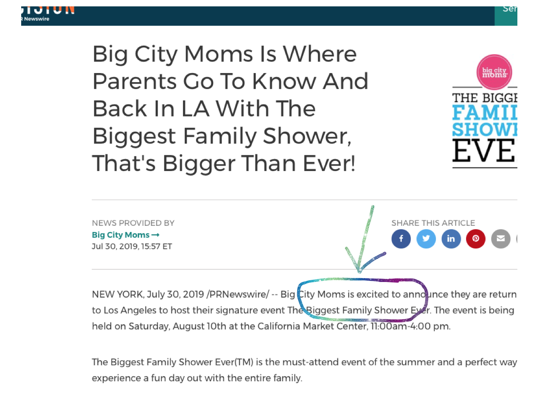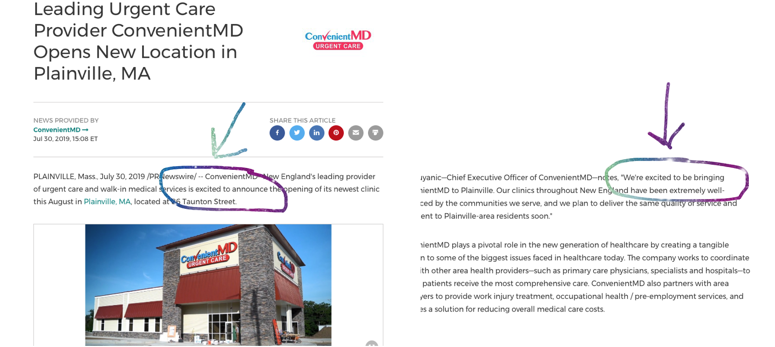
Despite the focus on digital media today, the traditional press release is still an important part of the public relations tool kit as it was more than a century ago.
According to the PR Museum (who knew there was such a thing?), the very first press release was issued in October 1906 following a train derailment in New Jersey that killed 50 people. Written by Ivy Lee who represented the Pennsylvania Railroad Company, the release was published verbatim in The New York Times. Not surprisingly, Ivy had once been a journalist for the paper.
Done well, a press release can serve as a powerful story, especially if the media outlet receiving the release finds value in its content, as the Times clearly did in 1906. One of the simplest ways to add value to any news release is to include useful and informative quotes. If you look at most releases, there is something of a template that communicators follow. After making an announcement in the headline and first paragraph, they follow it up with a quote — often from an executive or company spokesperson.
I’ve read and written hundreds of releases during my career, and one of my biggest pet peeves is a useless headline, opening statement or quote. You know – the one that starts with, “We’re excited to (FILL IN THE BLANK).” You get the idea.
Here are some examples direct from PRNewswire proving this practice is still alive and well. In fact, they’re so “exciting,” they’re boring:
It should go without saying that if you’re announcing something positive, you are happy, thrilled or ecstatic. Instead, write a compelling quote or statement that ties back to a key message you want to leave with your reader. Show personality and depth by attributing the statement to someone at your organization who your readers should know. Inspire your readers. If everything sounds robotic, rehearsed or stale, you’ve squandered your opportunity to add value and stand apart from the dozens of other releases sitting in email inboxes or listed on a website.
Admittedly, finding bad examples only took a couple of minutes. At the same time, I wanted to also show a powerful news release. Why is it powerful? Well, first, it leads with a compelling story that draws readers in. It captures their attention and is a stark contrast to the traditional press releases that cross reporters’ desks. Second, it uses strong quotes, telling why readers should care, which is the ultimate goal of the release:
 Here’s how you can craft a strong release for your organization.
Here’s how you can craft a strong release for your organization.
- Think soundbite: The media has a finite amount of time and the easier you can make it for them, the better your chances of getting coverage.
- Make it conversational: Your quote should sound like how someone would actually say it in an interview or when talking to colleagues, business partners or clients. Read your quote out loud. Does it sound real? Does it flow? If not, take a minute and think about the message you want to convey. Then, start typing it as you would tell it to a friend. You can tweak it from there. If you’re writing it for someone else, you should be able to “hear” them say it as you type it. You know you’re on track when this happens.
- Use a third-party endorsement as your quote: Instead of saying how great your new product or service is, consider a different perspective. How do others feel about it? How has it or how will it help them? Can you find someone to say it for you?
- Tie it back to your core values: If your company values customer service above all else, say how this new product provides exceptional service. Use a story to illustrate how you’re going above and beyond.
Press releases should be more than an item you check off your “to-do” list. They continue to be a valuable tool in the PR professional’s tool box, so take the time to stand out from the rest. Tell readers why they should care about your news, not how excited you are about it.


